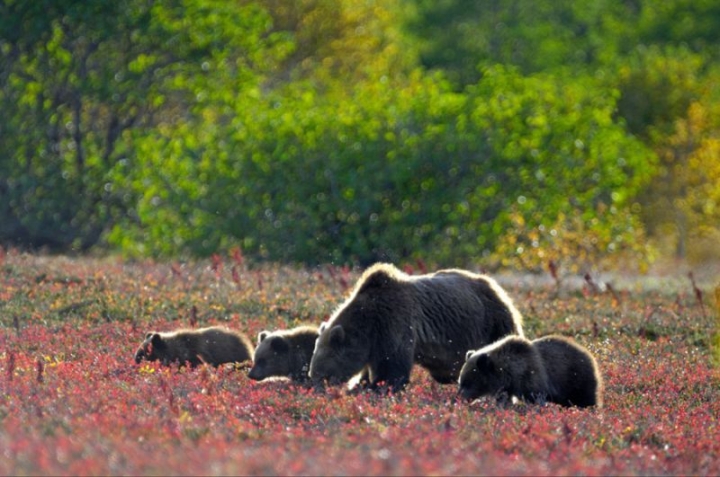
In the remote wilderness of Russia’s Kamchatka Peninsula, a recent eruption of the Krasheninnikov volcano has done little to disrupt the daily lives of the local fauna. According to scientists at the Kronotsky Nature Reserve, a vast protected territory on the Pacific Ring of Fire, animals are continuing their seasonal foraging routines despite layers of volcanic ash blanketing the landscape.
Specialists report that brown bears, curlews, wild reindeer, and moose have been observed calmly feeding on the abundant summer berry harvest of crowberries, blueberries, and honeysuckles. While light rains have only partially washed the ash from the plants, zoologists explain that the animals are unperturbed. Wildlife in this highly volcanic region has evolved to consume a significant amount of mineral grit and soil with its food, making the fine ash a familiar, if inconvenient, addition to their diet.
However, this current calm is viewed with cautious optimism by conservationists, who recall a devastating event from the recent past. The winter eruption of the Kizimen volcano in late 2010 had catastrophic consequences. Thick ashfall mixed with snow, forming a concrete-like crust over the tundra that prevented wild reindeer from accessing their winter pastures, leading to starvation and a significant population crash.
Today, the region’s Red-Listed reindeer herd is in a fragile state of recovery, with its population slowly rebuilding to approximately 800 individuals. Reserve staff are now anxiously watching the Krasheninnikov volcano, hoping its activity will cease, or at least not intensify, before the onset of the harsh winter, which could once again jeopardize the survival of these iconic animals.